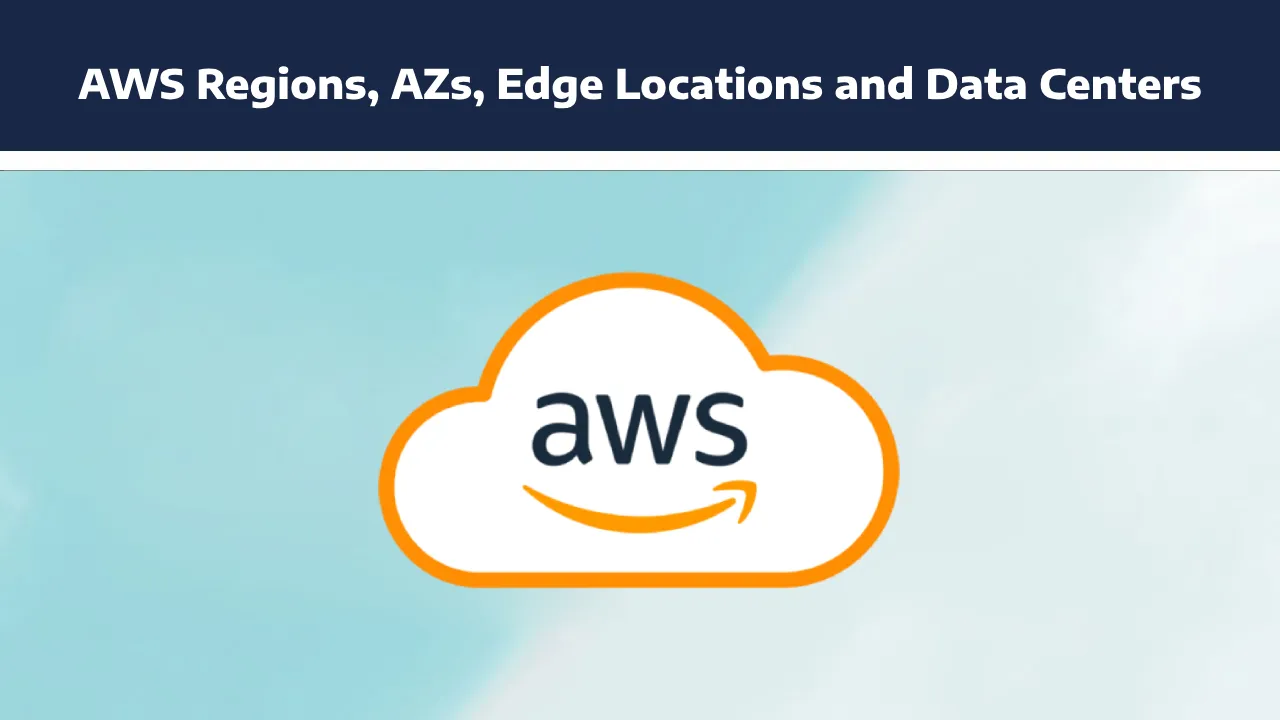AWS Regions, AZs, Edge Locations and Data Centers
Amazon Web Services (AWS), as a global cloud computing platform, operates on a vast and intricate infrastructure that comprises various elements to ensure scalability, availability, and reliability for its users. In this article, we delve into the key components of AWS infrastructure, including Regions, Availability Zones, Edge Locations, and Data Centers.
1. AWS Regions
1.1 Definition and Purpose
An AWS Region is a geographical area where AWS has established a presence to host its cloud services. Each Region consists of multiple, isolated data centers, known as Availability Zones (AZs). The primary purpose of having multiple regions is to provide customers with the flexibility to deploy applications and services closer to their end-users for reduced latency and improved performance.
1.2 Global Reach
As of my last knowledge update in January 2022, AWS operates in multiple geographic Regions worldwide, including but not limited to North America, South America, Europe, Asia Pacific, and the Middle East. Examples of specific Regions include us-east-1 (North Virginia), eu-west-2 (London), and ap-southeast-1 (Singapore).
1.3 Independent Infrastructure
Each AWS Region operates independently, meaning it is isolated from other Regions in terms of infrastructure and resources. This independence is crucial for ensuring redundancy and fault tolerance. If an issue occurs in one Region, services can still operate seamlessly in other Regions.
1.4 Service Availability
AWS services may not be available in all Regions, and the availability of services can vary from one Region to another. It is essential for users to check the AWS Regional Services List to confirm the availability of specific services in a given Region.
2. Availability Zones (AZs)
2.1 Definition and Characteristics
Availability Zones are isolated data centers within an AWS Region. They are physically separate from each other and are designed to be highly available and fault-tolerant. The purpose of AZs is to provide customers with the ability to run applications and services in multiple locations, thereby increasing resilience and minimizing the impact of potential failures.
2.2 Redundancy and Reliability
AZs are connected by low-latency, high-throughput links, allowing data to be replicated between them for redundancy. This design ensures that if one Availability Zone experiences an outage, the others can continue to operate, maintaining high availability.
2.3 Independent Power and Cooling
Each Availability Zone has independent power, cooling, and networking infrastructure. This separation is a critical factor in preventing correlated failures and ensuring that services in one AZ are not affected by issues in another.
2.4 Geographic Distribution
AZs are strategically located within a Region, often separated by miles. This geographic distribution contributes to disaster recovery planning, allowing users to deploy applications in different AZs to mitigate the impact of natural disasters or other localized incidents.
3. Edge Locations
3.1 Edge Location Overview
Edge Locations are part of the AWS CloudFront content delivery network (CDN) and are distinct from Regions and Availability Zones. While Regions and AZs house the primary infrastructure, Edge Locations serve as endpoints for the CloudFront CDN.
3.2 Content Delivery and Acceleration
Edge Locations play a crucial role in delivering content to end-users with lower latency and higher data transfer speeds. When a user requests content, the request is directed to the nearest Edge Location, reducing the round-trip time for data to travel from the user to the server and back.
3.3 Caching and Global Distribution
Edge Locations cache frequently requested content, enabling faster access for subsequent requests. With numerous Edge Locations distributed globally, AWS CloudFront achieves efficient content delivery and accelerates web applications and APIs for users around the world.
4. Data Centers
4.1 Physical Infrastructure
Data Centers are the physical facilities where AWS infrastructure is housed. These centers host the servers, networking equipment, and storage devices that power AWS services. Each AWS Region consists of multiple data centers spread across Availability Zones.
4.2 Security and Compliance
Data Centers adhere to stringent security measures and compliance standards. Physical access is restricted to authorized personnel, and comprehensive security protocols are in place to protect the integrity and confidentiality of the infrastructure.
4.3 Continuous Innovation
AWS continuously invests in expanding and upgrading its data center infrastructure to meet the growing demands of its users. This includes advancements in energy efficiency, hardware capabilities, and
Conclusion
Understanding the architecture of AWS, including Regions, Availability Zones, Edge Locations, and Data Centers, is essential for users seeking to leverage the full potential of the cloud platform. AWS's strategic placement of infrastructure globally, coupled with the redundancy and fault tolerance provided by Availability Zones, ensures that users can build and deploy applications with high availability and performance. As AWS continues to expand its global footprint, users can expect ongoing innovations and enhancements to the infrastructure that underpins the cloud services they rely on.
